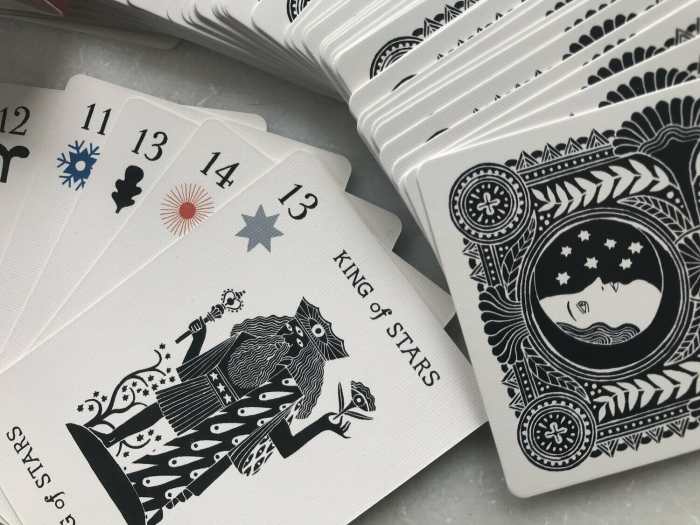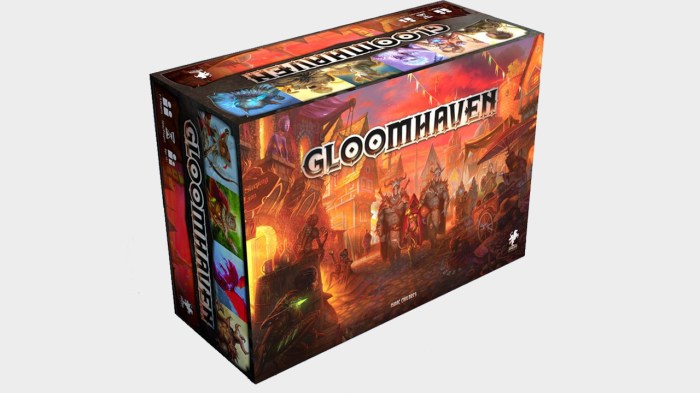
Welcome to the thrilling world of Two-player board games, where friendships can be forged or forever fractured over a single dice roll! Imagine a duel of wits, strategy, and a sprinkle of luck, all played out on a colorful board while snacks and laughter accompany the intense gameplay. Buckle up, because we’re diving into the eclectic mix of popular games that not only challenge your mind but also become the backdrop for unforgettable memories.
From the classic chess match fit for royalty to modern marvels like Codenames Duet, the landscape of two-player board games is as diverse as the players themselves. Each game comes with its own unique features and strategies that keep the competition fierce and the fun flowing. So grab your partner-in-crime (or your fiercely competitive sibling) and get ready for some epic battles at the board!
Popular Two-Player Board Games

Engaging in a battle of wits and strategy over a tabletop can forge friendships, rivalries, and even the occasional emotional breakdown (looking at you, Monopoly). Two-player board games are a fantastic way to spend time with a partner, providing a slice of competition and collaboration all at once. With an array of options to choose from, there’s a game for every mood, whether you want to strategize your way to victory or simply enjoy some lighthearted fun.
Let’s delve into some of the most beloved two-player board games and dissect their unique features, strategies, and a sprinkle of personal anecdotes for good measure.
List of Popular Two-Player Board Games
Understanding the mechanics and charm of these games enhances the experience, turning a simple night-in into a thrilling escapade. Below is a curated list of top two-player board games, showcasing their distinctive aspects:
- Chess
-A classic that requires strategic foresight and tactical maneuvers, each piece has its own movement, and the ultimate goal is to checkmate the opponent’s king. The game has a rich history, often likened to a battle where two armies clash on an 8×8 battlefield. - Jaipur
-A fast-paced card game set in the vibrant markets of India. Players assume the role of traders, acquiring goods to sell for the most profit, all while cleverly managing their hand and anticipating their partner’s moves. - Patchwork
-A delightful game focused on building the most aesthetically pleasing quilt on a personal board. It combines spatial awareness with resource management as players select patches from a shared board and design their quilt in a race against time. - 7 Wonders Duel
-This game is a head-to-head version of the popular 7 Wonders. Players draft cards to build civilizations, accumulate resources, and develop military might, all while keeping an eye on their opponent’s strategy. - Star Realms
-A deck-building game where players compete as space fleet commanders, acquiring ships and bases to reduce their opponent’s authority to zero. The dynamic gameplay offers varied strategies and endless replayability.
Strategies for Competitive Play
Equipped with knowledge of these games, it’s time to discuss the strategies that can lead to sweet, sweet victory. Each game demands a different approach, balancing offense and defense, and sometimes a little bit of luck.
- Chess: Control the center of the board early, develop your pieces efficiently, and always be aware of potential threats to your king. Remember, sacrifice isn’t just for dramatic flair; it can open up avenues for a checkmate down the line!
- Jaipur: Focus on collecting sets of goods to maximize your points, but don’t forget to pay attention to your partner’s moves. Timing is key; selling at the right moment can score big points and catch your partner off-guard.
- Patchwork: Prioritize pieces that fill your quilt effectively while also considering the time you spend acquiring them. Every patch you take has a time cost, and the goal is to finish your quilt before your partner does!
- 7 Wonders Duel: Keep a close eye on your opponent’s military progression while also diversifying your resources. A balanced approach is crucial; lean too heavily in one direction, and you may find yourself outmaneuvered.
- Star Realms: Focus on building combo chains with ships and bases to maximize your damage output. Don’t ignore trade opportunities; a well-timed purchase can change the game in your favor.
Personal Experiences with Two-Player Board Games
There’s nothing quite like the camaraderie—or heated competition—of playing two-player board games. One memorable night involved a particularly intense session of Chess. Picture it: a quiet evening, two cups of coffee and a fierce competition on the board. As the game progressed, my partner and I traded pawns like they were candy, each trying to outsmart the other. The tension mounted, and just when I thought I had secured my victory, I blundered on my queen’s movement, leading to a swift checkmate.
The moral of the story? Never underestimate the power of a well-placed bishop!Another unforgettable experience was playing Jaipur during a road trip. We found ourselves in a diner booth, surrounded by the smell of pancakes and coffee, as we battled for market dominance. The game turned out to be not just about trading but also a race to keep our laughter and competitive banter flowing, making every transaction feel epic—even if it involved trading a mere camel card.
Game Mechanics and Dynamics

In the world of two-player board games, game mechanics and dynamics are the vibrant threads that weave the experience together, turning a mere cardboard tableau into an exhilarating battlefield of wits and strategy. Whether you’re engaging in a fierce competition or a cooperative adventure, understanding these mechanics can elevate your game from “blah” to “bravo!” Game mechanics are the rules and systems that dictate how players interact with the game and each other.
These mechanics enhance gameplay by introducing variety and depth, creating a mix of strategy, chance, and skill. For instance, some games employ resource management mechanics, where players must gather and allocate resources wisely to outsmart their opponent. Others might use turn-based actions that require players to think several steps ahead, akin to a chess match where every move can change the fate of the game in a matter of seconds.
Mechanics and Player Interaction
The dynamics between players are heavily influenced by game mechanics, shaping the way they interact and strategize. Players may find themselves forming alliances or engaging in hostile takeovers, depending on how the game encourages interaction.
- Turn-Based Actions: Many two-player games utilize turn-based actions, allowing each player to plan their moves carefully. This mechanic builds anticipation and can lead to strategic mind games akin to a game of cat and mouse.
- Resource Management: In games like “7 Wonders Duel,” players must gather and manage resources while anticipating their opponent’s moves, leading to a dynamic tug-of-war. This adds layers of strategy as players balance between offense and defense.
- Direct Conflict: Titles such as “Catan” bring direct conflict into play, where players can block resource access or trade deceitfully, enhancing the rivalry and excitement between players.
- Action Points: Some games use an action point system, allowing players to perform multiple actions in a single turn. This mechanic can lead to surprising outcomes, as players can execute complex strategies quickly, pulling the rug out from under their opponent.
The interplay between competitive and cooperative dynamics can deeply influence the gaming experience. Cooperative gameplay often fosters camaraderie, while competitive dynamics can ignite rivalries and laughter, depending on how players engage with each other.
Cooperative vs. Competitive Dynamics
In two-player games, the choice between cooperative and competitive dynamics can drastically shift the tone and enjoyment. Cooperative games encourage players to work together toward a common goal, often requiring communication and strategy to overcome challenges.
- Cooperative Example: In “Pandemic: Rapid Response,” players work as a team to deliver medical supplies around the globe while battling outbreaks. This fosters teamwork, as players must collaborate to devise strategies that maximize their efficiency.
- Competitive Example: In contrast, “Ticket to Ride” emerges as a competitive classic, where players race to complete their train routes while sabotaging their opponents. This creates a thrilling atmosphere of rivalry, where every decision is a potential dagger in the back.
- Mixed Dynamics: Some games, like “Star Wars: X-Wing Miniatures Game,” allow for both cooperative and competitive play, inviting players to team up against a common enemy or challenge each other in dogfights. This flexibility in dynamics keeps the gameplay fresh and exciting.
Board Games vs. Card Games
When it comes to the world of tabletop entertainment, board games and card games are like the two sides of a coin that’s been flipped way too many times. Both offer unique realms of strategy and fun, yet they diverge in gameplay and the tactics you can employ. Think of board games as the cozy living room couch where you gather with friends, while card games are more like the spirited game-night table that’s been through a few wild parties.Board games typically feature a physical board where players move pieces, roll dice, and strategize their way to victory, often requiring a bit more space and setup time.
Card games, on the other hand, rely on a deck of cards as their main mechanism, allowing for quick and dynamic gameplay that can fit into a pocket or a purse. While board games often require planning and foresight, card games can turn on a dime with the right draw, making strategy more fluid and sometimes a bit chaotic.
Key Differences in Gameplay and Strategy
Understanding the differences between board and card games helps players choose the right game for their mood or occasion. Here are some distinctions that set these two beloved forms of gameplay apart:
- Physical Setup: Board games often come with a plethora of components such as boards, tokens, cards, and dice, requiring a larger setup space. Card games usually need just a deck or two, perfect for spontaneous game nights.
- Game Length: Board games can take anywhere from thirty minutes to several hours to complete, while card games often wrap up in a fraction of the time, allowing for multiple rounds in one sitting.
- Strategic Depth: Board games typically offer more complex strategies with multiple paths to victory, whereas card games can be more straightforward but often incorporate elements of luck and chance.
- Player Interaction: Many board games encourage direct player-to-player interaction through mechanics like trading or vying for control of territories, while card games can sometimes promote a more competitive atmosphere where players are pitted against one another.
Popular Two-Player Card Games
Card games have their own unique charm and a host of options for two players. Below is a list of popular card games that can easily compete with board games in terms of fun and engagement:
- Rummy: A classic game that focuses on forming sets and runs of cards, making for strategic interplay.
- Cribbage: A combination of card play and board movement that challenges players to think ahead as they score points.
- Gin Rummy: A faster-paced version, where players aim to form melds and knock for the win.
- War: A simple game of chance and luck, perfect for casual players who don’t want to overthink their moves.
Comparison of Two-Player Board Games and Card Games
To illustrate the differences and similarities between these two forms of gaming, here’s a concise table comparing popular two-player board games with card games based on key features:
| Game Type | Example | Gameplay Duration | Strategic Depth | Portability |
|---|---|---|---|---|
| Board Game | Chess | 30-60 minutes | High | Medium |
| Board Game | Stratego | 45-90 minutes | Moderate | Medium |
| Card Game | Rummy | 15-30 minutes | Moderate | High |
| Card Game | War | 10-20 minutes | Low | High |
Whether you’re plotting world domination on a game board or engaging in a strategic duel with a deck of cards, both board games and card games offer delightful experiences, each with its unique flavor of fun!
Final Summary
In conclusion, Two-player board games offer a delightful blend of strategy, competition, and camaraderie, making them the perfect antidote to a boring evening. Whether you’re plotting your next move in a strategic showdown or teaming up against a common foe, these games create endless opportunities for laughter and bonding. So, let your competitive spirit soar, and may your dice always roll in your favor!
Popular Questions
What are the benefits of playing two-player board games?
Playing two-player board games helps improve strategic thinking, enhances communication, and strengthens your bond with your gaming partner. Plus, it’s a great excuse to eat snacks!
Can you play two-player board games solo?
While many two-player games are designed for duos, some can be adapted for solo play with a bit of creativity—just be prepared to have a serious conversation with yourself!
What makes a two-player board game great?
A great two-player board game balances strategy and fun, has engaging mechanics, and ideally requires minimal setup time—because who wants to spend more time setting up than playing?
Are there two-player board games for kids?
Absolutely! Many two-player board games are designed specifically for kids, making learning fun while fostering teamwork and critical thinking skills.
How do I choose the right two-player board game?
Consider your and your partner’s interests, the level of strategy you prefer, and the time you have to play. If all else fails, flip a coin—because the stakes are high!

